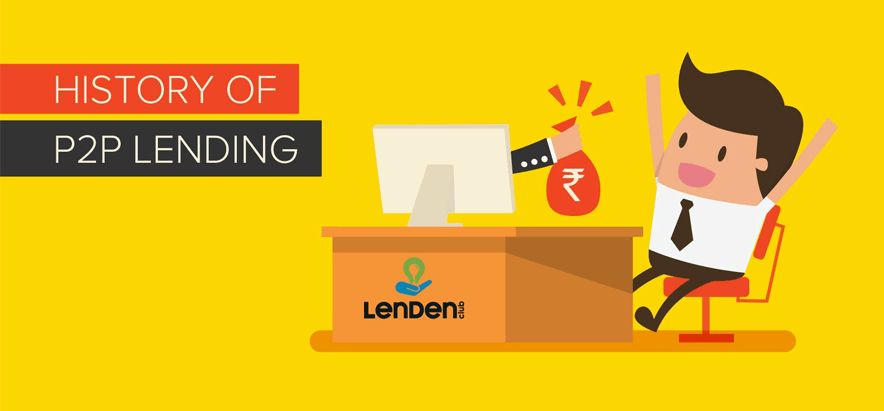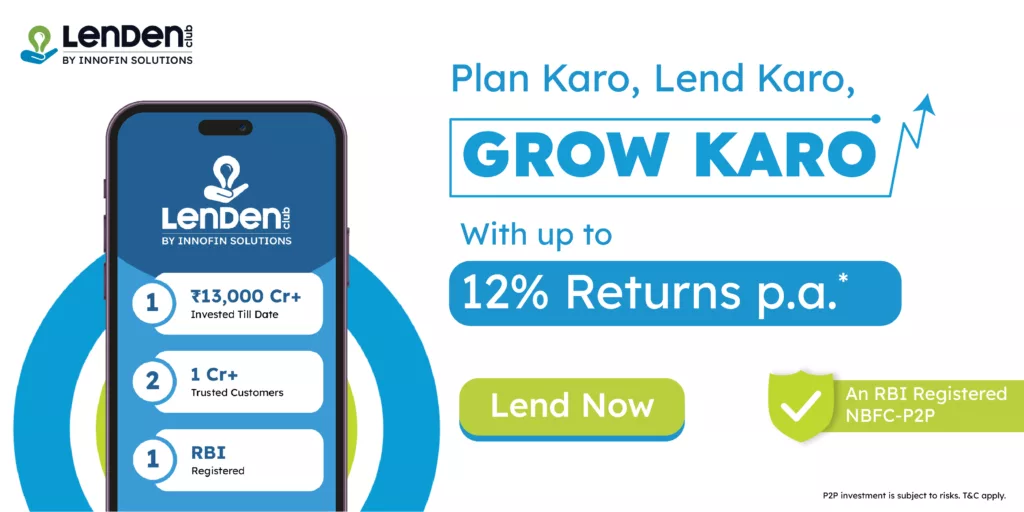History of Peer-to-Peer (P2P) Lending in India

India’s financial landscape has entirely changed due to lightning-fast digitization, particularly after the COVID-19 outbreak. Lenders have been substantially motivated to build a banking system without formal intermediaries, which is known as Peer-to-Peer lending. P2P lending provides customers with simpler and more versatile credit option.
Such microfinance lending expands throughout the banking landscape, providing creditors and debtors with profitable options. Peer-to-peer lending, which is very different from conventional and other investing routes, is thus flourishing and making lenders incredibly wealthy with the stable returns it provides.
Let us learn more about the history of P2P lending in detail and how it affects the Indian financial industry.
Step-to-Step Journey in the Development of Indian Peer-to-Peer Lending
Numerous financial shifts have occurred throughout the last ten years. Peer-to-peer (P2P) lending, blockchain-based technology, and digital currency are a few of the innovative channels of finance propelling an evolution away from major financial institutions and the wealthiest people toward perceptive individuals and entrepreneurs.
Evolution of the Conventional P2P Loan Industry
Since 2012, India has had a sizable peer-to-peer financial services business, with private financiers catering to the preferences of those seeking quick personal loans like LenDenClub. Conventional loans and banks account for a dismal 15% of the overall market. Even now, many Indians obtain funding from relatives, friends, loan sharks, and business partners.
The world’s biggest offline crowdfunding industry is a massive online P2P lending economy. P2P loans convey the same effortless accessibility, dependability, and quickness as the previous offline financing options. This aims to ease various personal and commercial financial concerns.
How Peer-to-Peer Lending is Growing in India
Although P2P lending began to take root in early 2012, the UK became the first nation to develop a web-based system for P2P lending called Zopa. After a lengthy evolutionary process, Indians now have a chance to get peer-to-peer (P2P) loans that do not require lengthy approval periods or physical verification, thanks to the growth of the web.
Borrowers who are seeking faster short-term loans also benefit. The P2P platforms are filling this void, streamlining the loan financing and application processes.
Also, numerous entrepreneurs found it difficult to get loan approval since banks demanded significant asset value from their clients.
P2P platforms have consistently been effective in helping people get out of tight financial circumstances.
Let’s Have a Glance at Historical Transformation of P2P
Early 2000s: P2P lending begins as an online initiative, offering a platform for individual borrowers to connect with lenders directly, bypassing traditional financial institutions.
2005: Zopa, launched in the UK, becomes one of the first P2P lending platform.
2006-2008: The concept gains momentum in the United States with the launch of platforms like Prosper and Lending Club, offering an alternative to bank loans and traditional investing.
2008: The global financial crisis highlights the potential of P2P lending as a more resilient and decentralized alternative to traditional banking systems.
2009-2010: Regulation starts to catch up with the industry. The SEC in the United States requires platforms to register their offerings as securities, starting a trend towards greater oversight worldwide.
2012: The JOBS Act in the United States is signed into law, facilitating a regulatory framework that encourages the growth of crowdfunding and P2P lending.
2013-2015: Rapid growth phase. P2P lending platforms expand significantly in terms of loans issued. This period also sees the diversification of services, including business loans, real estate financing, and more.
2015-2016: The industry faces its first major challenges, including defaults, regulatory hurdles, and the need for better risk management.
2016 onwards: Introduction and expansion in India. P2P lending finds its footing in India, offering a promising alternative to traditional banking and non-banking financial company (NBFC) loans.
2017: The Reserve Bank of India (RBI) formalizes the sector by releasing guidelines for P2P lending platforms, categorizing them as NBFC-P2Ps. This regulatory recognition is a significant milestone, providing credibility and a framework for growth.
Impact and Changes in the Game:
- Financial Inclusion: P2P lending has played a crucial role in enhancing financial inclusion in India, reaching underserved segments of the population without access to traditional banking services.
- Innovation and Technology: The introduction of P2P lending has spurred innovation within the financial sector, leveraging technology to streamline the borrowing and lending process.
- Alternative Investment: For lenders, P2P platforms have become a viable alternative investment class, offering potentially higher returns compared to traditional investment options.
- Risk Management: The evolution of P2P lending in India has seen continuous improvement in risk assessment and management, utilizing data analytics and AI to better predict borrower behavior.
The entry and growth of P2P lending in India have significantly changed the financial landscape, providing both challenges and opportunities for regulators, participants, and consumers alike.
Although P2P lending is still a relatively new idea, it is gaining popularity quickly as more and more Indians sign up for online lending services. Around fifteen peer-to-peer lending platforms are functioning under a Non-Banking Finance Company (NBFC) license granted by the Reserve Bank of India (RBI).
Even if transactions in P2P lending might provide substantial returns, you need to understand the terms of the service you engage in. Therefore, exploring the facts and history behind P2P lending helps build faith in considering it as an easy financing and a different investment opportunity.
The P2P systems guarantee accelerated response times and precise underwriting, capitalizing on India’s widespread smartphone use and inexpensive internet access to meet customer demands.
Conclusion
The historical milestone of P2P lending is quite inclusive and elaborates on the improvements that have occurred quickly. You will note that P2P services become more convenient and available for you as time elapses. However, you must understand that with a negative credit rating, you could be charged higher interest rates to offset the creditor’s percentage of bad debt risk. This article is only a snippet of the specifics of P2P, and you must make an extra effort to understand the provider’s terms and conditions for a loan application.
FAQ
1. Is lending via P2P risky?
No, the Reserve Bank of India (RBI) published comprehensive laws governing P2P lending in 2017. To reduce creditor uncertainty, most lending services are Nonbank financial companies (NBFCs) with an INR 50 lakh loan ceiling. Furthermore, technology-driven systems guarantee that the money is distributed across numerous borrowers to reduce investment risks.
2. Are P2P funding and crowdsourcing equivalent?
The two are creative investing methods with a similar but distinct fundamental idea. In crowdfunding, a group of people combine their resources to support a venture, but in P2P finance, creditors and debtors collaborate to handle short-term unsecured financing.
P2P customers, on the contrary, have access to many lenders for their lending needs. Lenders can issue credit to many clients. P2P credit is a secure substitute for institutions’ conventional financing paradigm.
3. Are interest rates for Peer-to-Peer borrowing subject to market fluctuations?
Market conditions might trigger the debtors’ interest rates to change. On the other hand, peer-to-peer financiers provide debtors with favourable terms, with rates ranging from 5 to 15% annually. As a result, lending institutions get an average profit of anywhere from 10 to 12 per cent while inflation over the long run is absorbed in 6%. Besides, the profit margins are inconsistent with the market’s movements.
4. Are there considerable benefits of P2P borrowing compared to other forms?
Yes, there are numerous benefits of P2P borrowing. They include the following.
- Convenience
- Reliability
- Simplicity
LenDenClub P2P lending services embody such advantages when providing loan services. The company is committed to adapting loan services to match your expectations.

